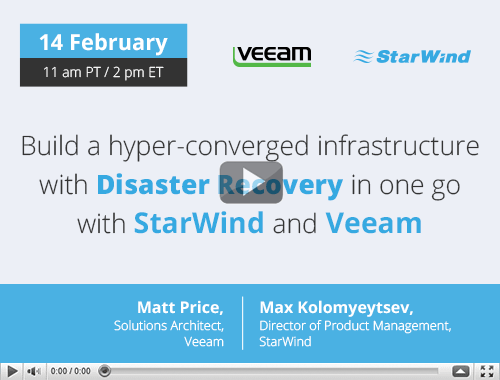84% of CIOs admit they can’t deliver the data that clients need in right time, as average recovery takes 3 hours. The number of downtime events and their costs increases on a yearly basis. Veeam software, integrated into StarWind Backup Appliance, allows recovering data in less than 15 minutes.
StarWind’s first hardware product is StarWind HyperConverged Appliance, which simplifies virtualization and reduces its cost by unifying compute, networking and storage in one scalable turnkey solution. Last year StarWind introduced StarWind Storage Appliance, which was designed for those who already had existing or planned compute infrastructure. It is a high-density and high-performance storage that connects to the main infrastructure via all standard uplink protocols (iSCSI, SMB3, NFS) and utilizes data reduction technologies to optimize capacity utilization. The third hardware product is StarWind Backup Appliance, which is a high-capacity backup-oriented solution. All StarWind appliances feature a built-in cloud gateway that utilize public cloud like Azure and AWS as a storage tier and use it for backup and DR purposes as well as to replace the entire local storage with cloud space.
Veeam reaches effective virtualization through Application Aware Image Processing. This is an agentless backup process which starts from quiescing application using VSS or the hypervisor integration tools and then takes a VM snapshot that is later used in the backup process.
New features from Veeam Availability Suite are embedded in the Starwind Backup Appliance and include vPower, Verified Protection, Virtual Labs and others. Veeam also provides options for secure restoration of individual files, application or mailbox items.
Explorer for Exchange allows the recovery of mailbox items like contacts, letter content and others. Explorer for Active Directory allows to search and restore active directory objects to the same or different location (GPOs, DNS records) or restore original passwords. Explorer for SQL provides for restoration of SQL databases and allows table-level or object-level recovery and Explorer for Oracle allows restoration of Oracle databases.
All of the abovementioned serves to accomplish 3-2-1-0 Rule: 3 copies of the data, 2 separate media types, 1 offsite location and 0 errors.


